The Storied Art of Rob Akey

Rob Akey, from Whitefish, grew up in the Montana mountains. He has worked steel gangs, trail crews, wheat harvests and has hiked most of Glacier National Park. After completing a degree in Art & Design at the Minneapolish College of Art, he worked for Tonka Toys before returning to Montana. He chooses subjects that have stories that need to be told. Rob paints his native Montana to elevate and preserve its magnificence.
See more about his show “Observation, Memory, and Invention: Western Art and Imagery Reconsidered” on his and our Website.
Rob Akey
839 8th St. E
Whitefish, MT 59937
[email protected]
(406) 862-7425
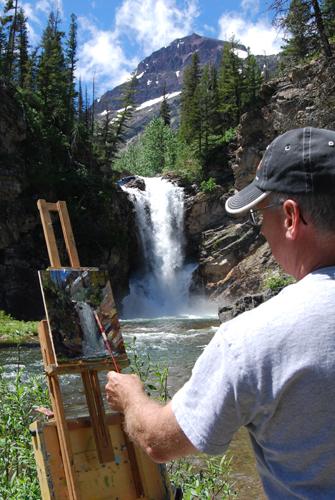
You are a “native Montanan” artist. How do you think this impacts your approach to your art?
Though a native-born Montanan I have left twice and returned twice. Both leavings created a certain separation anxiety — first as a child and secondly as an adult with my own young family. It’s true that “absence makes the heart grow fonder” and it’s that deep appreciation of Montana’s landscape, history, and people that is at the core of my work. We (my wife, Kim, daughter, Josie, and I) returned in ‘93 and it was only then that my painting became a serious endeavor.
2015 is here. What are your plans for the year and for your art work. What would you like to accomplish?
While I’m pleased with the path my work has taken technically and conceptually, I always have a hunger to expand, improve, and grow as a painter. I’ve begun to explore the figure in the landscape, i.e. The Boys of Summer, and of course there are always subjects of a contemporary social nature presenting themselves to me and they ultimately can’t be ignored. Recently I’ve been gathering ideas, concepts, and imagery that I’ve mentally filed under the heading “Roadside Attractions” for a body of work that will materialize within the next year or two.
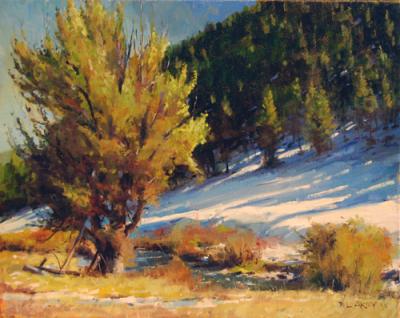
While you admire Charlie Russell, you seem to regard the power of his landscapes as more inspiring than what you call the “distracting theatre of his Western subjects.” How does your approach to art differ from Russell’s?
I am in awe of the essential truth in Russell’s depiction of the Montana landscape. I can smell the sage and the cold mountain air in his work.
His gift was in the telling of stories, in a romantic way, of the West that had at his time recently passed.
I differ in my approach in that I look for the romance in what I see in the landscape today. An old worn-out tractor, to me, tells the story of success and failure, toil and perseverance. It’s representative of the story of life and death in the West unembellished.
You’ve been interested in art since you were a champion doodler in grade school. Is painting something you feel you were born to, or more a result of willpower and effort?
My opinion is that it is both. As much as some refuse to accept it, the existence of “knack” or “talent” is a reality. However, those successful artists who will admit to having either will quickly add that it takes so much more than that to achieve even modest success, and by success I mean the creation of works that reflect some degree of artistic merit. Talent, knowledge, and persistence are the main ingredients of artistic accomplishment and the least of these is talent.

Early on you received instruction in the Nicolaides method of drawing. Tell us what that is, and how it was beneficial to your work.
Kimon Nicolaides taught at the Art Students’ League of New York in the 1920s and ‘30s. He devised a fairly precise year-long curriculum of drawing exercises utilizing gesture, contour and mass studies. It is both tedious and grueling and therefore required a mentor/motivator who I was lucky to have at the time. As with all effective drawing teaching methods, and there are many, he taught me to see in terms of large shapes, size relationships, and the effect of light on objects.
It’s interesting that you spent so many years as a creative director in a toy company. Does that have any relevance to your work?
I think the corporate era of my art career influences many aspects of my painting era. Firstly, the design process informs how I compose work. Carefully considered compositional arrangement of elements in a painting is design. Secondly, I approach the concept phase of a painting almost as a project assignment with a set of “givens” — things that must be included or adhered to in order for the work to fulfill its original intent. Thirdly, the work is always intended for an audience and never produced in a vacuum or for my purely personal gratification.
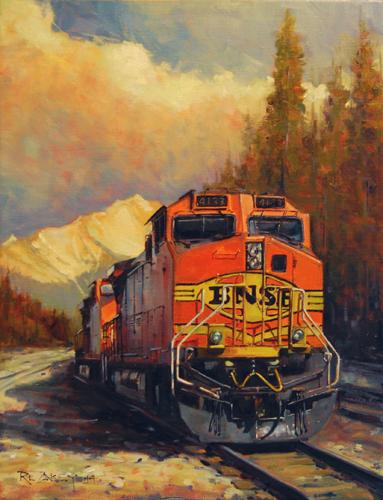
You say your art “tells a story.” Describe one of your recent paintings and the story and emotional content you are trying to convey.
The painting Endurance depicts what is on a purely visual level, a group of bison standing in a wallow somewhere on the prairie. The story it tells, however, is one of strength and the positive attributes of unity. Here I’ve used a three-generation depiction of a family unit as symbolic of the larger herd. The story this painting tells both is metaphorical and literal. Survival depends on many strengths both individual and as part of a larger and often complex community. And you, the viewer, are very much part of the story.
2015 will mark your 10th year as a full-time artist, a goal which took you many years to achieve. How has this accomplishment influenced the direction of your work, and your choice of subject matter and production of artwork?
It is the full-time, day-in and day-out approach to the production of artwork that affords any artist the best opportunity for growth and improvement technically. As one becomes more accomplished, acceptance and approval follow which builds confidence. In turn, I have felt prepared to take on more challenging subjects. I also think that most dedicated, serious artists’ work becomes more poignant and acquires an increased thematic gravity as he or she matures and that is the direction I think my work is taking.

Do you consider yourself an American impressionist? (Why and how?)
I consider myself an American Painter and try to leave it at that. I believe that when an artist starts to categorize himself he’s started down a road that will become creatively narrowing. When I paint outside, the results are usually somewhat impressionistic. In the studio anything from painterly realism to impressionism with a dose of tonalism may occur. I try to let the subject dictate the feel of the paint and let style occur naturally.
What is the most fulfilling kind of day for you like?
It varies, but it usually involves building a fire in the wood stove. Browsing a couple of chapters in any of the dozens of books on master painters in my studio. Stretching new canvas.
Completing an under painting for tomorrow’s start. Good progress with what’s on the easel (or easels). And maybe a trip to the bank.
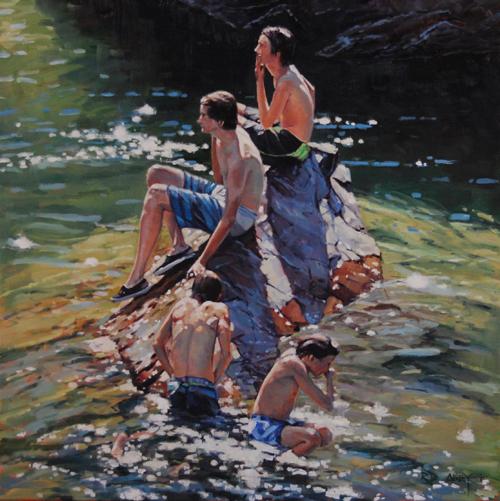
Galleries that show Rob’s work
Catherine Louisa Gallery
catherinelouisagallery.com
(406) 670-7746
120 North Broadway
Billings, MT 59101
Going To The Sun Gallery
GoingToTheSunGallery.com
(406) 862-2751
137 Central Avenue
Whitefish, MT 59937
Hodges Fine Art
hodgesfineart.com
(406) 932-6834
122 McLeod Street
Big Timber, MT 59011
Latigo & Lace Gallery
augustagallery.com
(406) 562-3665
124 Main Street
Augusta, MT 59937
Sacagawea Gallery
sacagaweagallery.com
(406) 587-4464
777 East Main Street
Bozeman, MT 59715
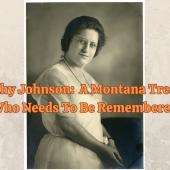


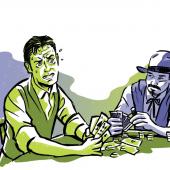
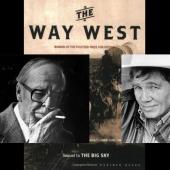







Leave a Comment Here